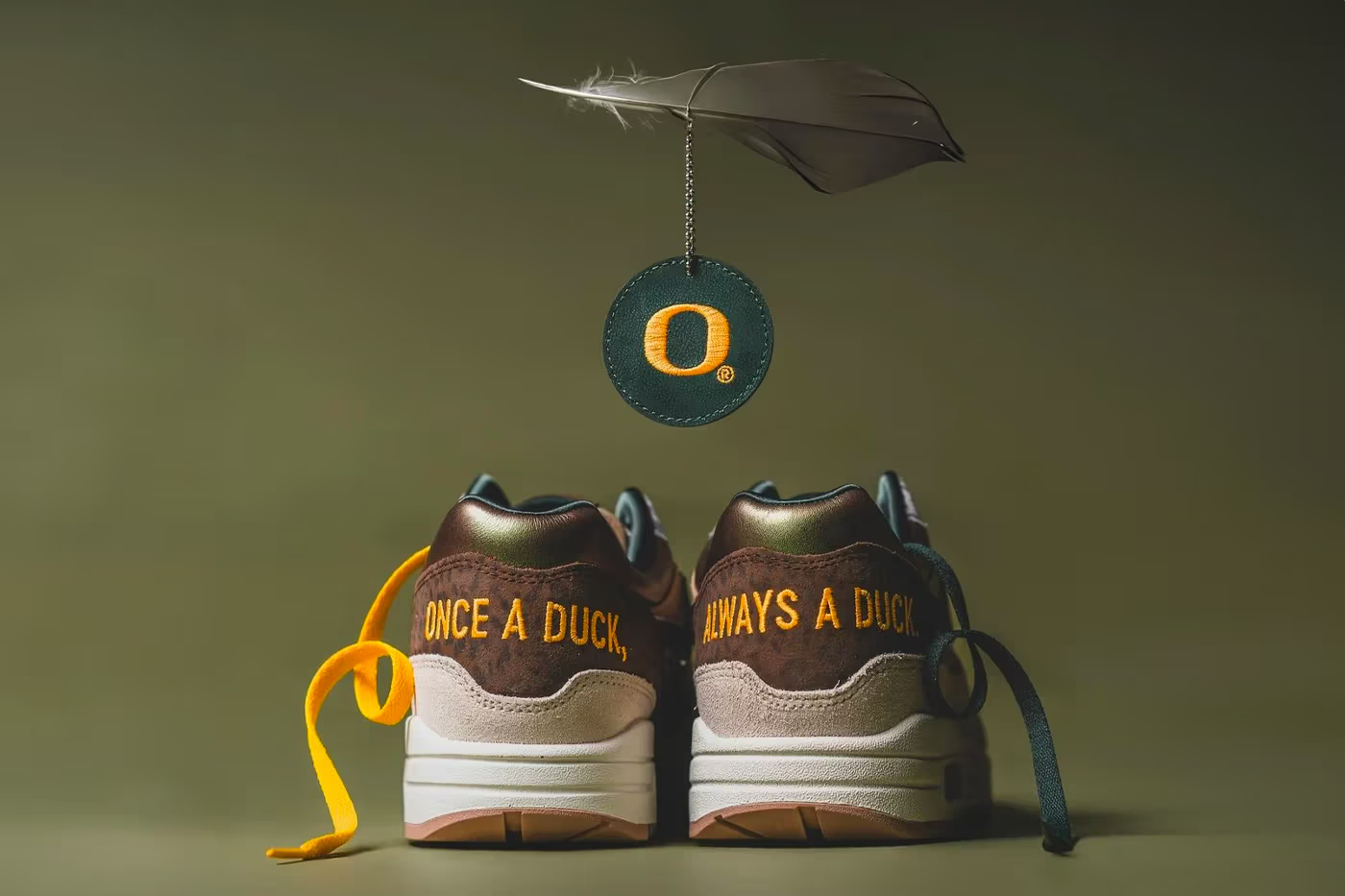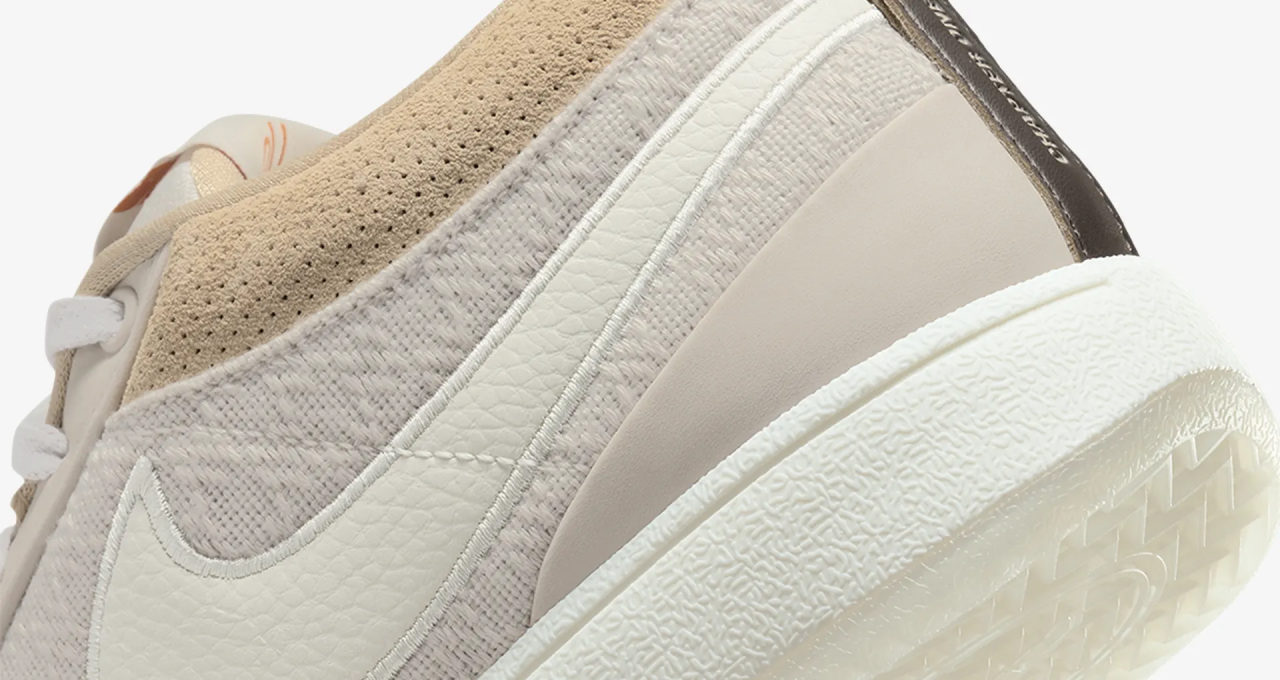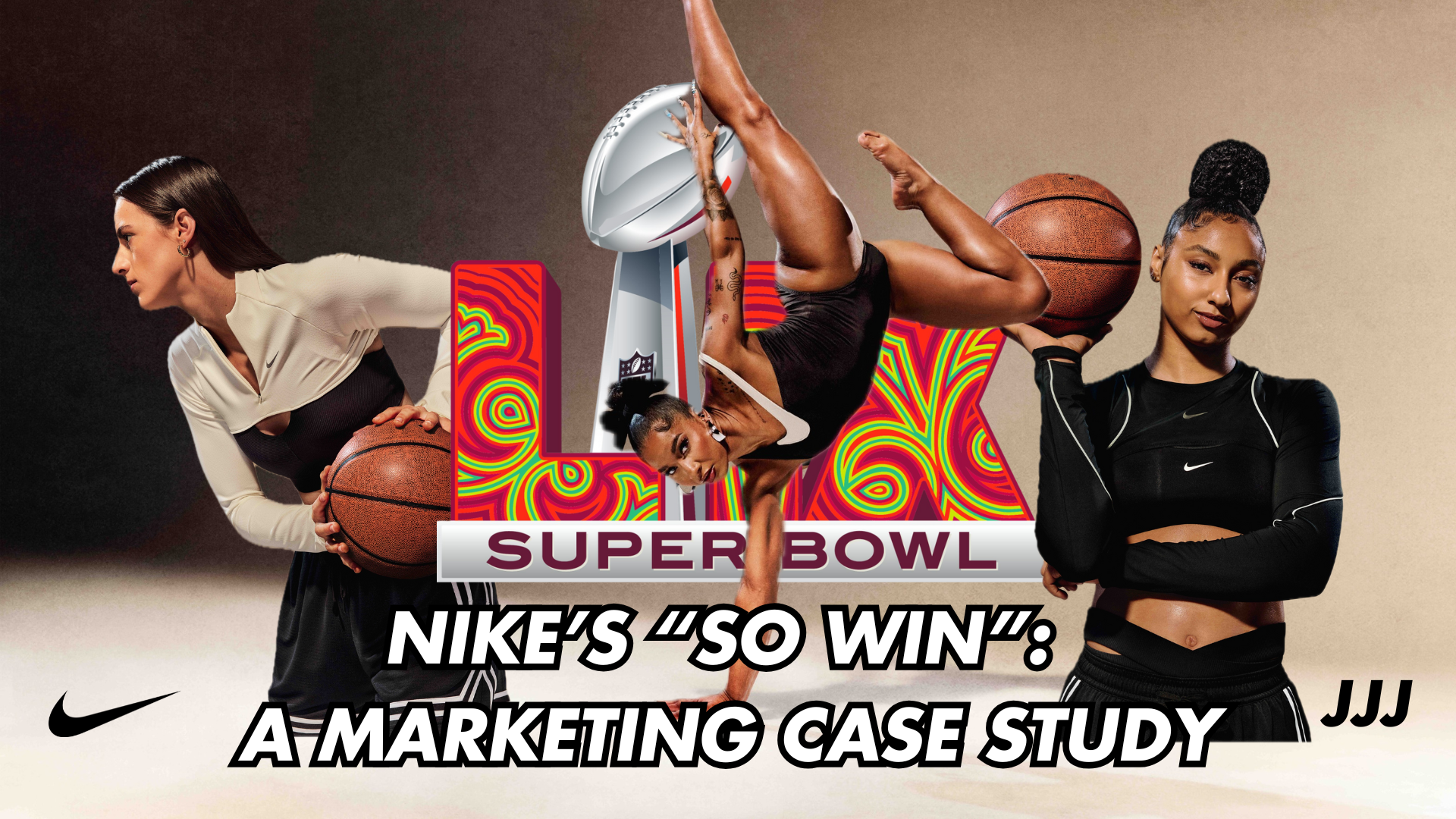Nike and the University of Oregon assembled the marketing infinity stones for their latest Air Max...
Nike's Air Jordan 1 'Banned': A Marketing Case Study

Nike would have never done this campaign had it been any other time than now. The sportswear giant debuted a never-before-seen marketing campaign for their newest ‘Banned’ Air Jordan 1. Between new verticals and old references, Nike created a near-perfect campaign that effortlessly captured its desired audience. However, near-perfect isn’t flawless, and Nike received mixed feelings about their ‘Banned’ Jordan 1 release. But how can Nike sell out the same sneaker eight consecutive times, and what could they possibly do differently that gained worldwide attention like nothing we’ve ever encountered?
This marketing case study unpacks Nike’s marketing campaign for the ‘Banned’ Air Jordan 1 and the strategies used to transform a 40-year campaign into a head-turning, well-rounded, and must-see event.
The 40-Year History of the Air Jordan 1
The entire Jordan line was almost a ‘could have been’ had he stayed with his original commitment to Adidas. Before signing with Nike, Jordan’s favorite brand was Adidas, and he was going to follow through on his interests before his mother insisted he met with other brands. That one conversation made Nike billions while leaving Adidas in the corporate dust.

Upon signing a five-year, $2.5 million contract with Nike in 1984, Jordan would begin his career in the Nike Air Ships, and soon turn to the coveted Air Jordan 1s shortly after in 1985. His signature sneakers caught the attention of millions, for better and for worse. Fans were pleading with Nike to release the Air Jordan 1s, while simultaneously, the NBA was fining Jordan $5,000 per-game because the sneakers did not meet the league’s policy on uniforms and colors.
Nike recognized the unique marketing opportunity upon hearing the news, and voluntarily paid the $5,000 per-game fine to allow Jordan to play in the sneakers. This not only made front-page headlines, but also built the anticipation for the eventual release to the public. Nike’s strategy to pay the fine was one of the most pivotal moments in sports marketing history, and would set the scene for the brand’s 40-year anniversary campaign.
Banned, But Never Forgotten
The ‘Banned’ Air Jordan 1 is more than Jordan’s first signature sneaker: it’s the most gravitational pulling sneaker of all time. Known on the court, off the court, a staple in hip-hop culture, and cherished by millions, the ‘Banned’ Jordan 1s have aged like fine wine, and continue to sell out despite retroing seven times (1994, 2001, 2009, 2011, 2013, 2016, 2025). The list of icons that have shown their love towards the ‘Banned’ 1s ranges from Kanye West; Jay-Z; Michael Jackson; LeBron James; Rihanna; and many, many more.

With the 2025 pair being the eighth release of the ‘Banned’ 1s, how can Jordan continue their sell-out streak? Even with the retail price continuing to climb up to now $200+, most models are reselling for more on the aftermarket, with older editions like the 1985 and 1994 models selling for thousands. So what are they doing differently?
Blocked Out the Noise & Everything Else
Nike revolutionized their original marketing campaign from 1985 and displayed it, quite literally, everywhere. Playing into the banned theme, the original ad showed Jordan but blocked out his sneakers due to violating the NBA’s uniform and color policy.
This one, simple edit has affected all of these areas of Nike’s digital footprint by blocking out:
All Air Jordan 1 Product Photos On Their Website

Nike runs the risk of confusing its uninformed audience of this change, but this marketing is almost too good to pass up. Fortunately, Nike’s marketing campaign has had a strong ripple-effect through media companies across many verticals, so even if it’s the audience’s first time seeing this black bar, it will likely not be the last time, either.
Jordan Brand’s Instagram and X accounts, both having seven to eight-figure followings
This sacrificial strategy forced Jordan to look elsewhere for their marketing. However, the upside to removing their accounts is worldwide attention - with millions wondering what is going on. Jordan’s accounts accumulated millions of followers each, but as it’s shown in the audience breakdown coming up, this strategy was a small price for the brand’s tremendous ROI for company and campaign awareness.

All Jordan Logos on NBA Jerseys
Since Nike is the official uniform and outfitter for the NBA, there were several jerseys that got the blocked-out treatment - some of which include the Los Angeles Lakers, Boston Celtics, Dallas Mavericks, and, of course, the Chicago Bulls. This move added to Nike’s multi-vertical marketing strategy - taking their campaign beyond the digital realm.
In celebration of 40 years of Air Jordan, the Jordan Brand tried to get its Jumpman logo "banned" on the court, but the NBA pulled the plug at the last minute...
— Complex Sneakers (@ComplexSneakers) January 22, 2025
Here is what the jerseys were supposed to look like 👀 pic.twitter.com/8dBGhx6CLe
Jordan's Sneakers on His Statue in the United Center
Just when you thought it couldn’t get any crazier - it did. Nike isn’t just blocking Jordan 1s from their website, on their social media, and NBA jerseys, they’re blocking out (literally) Jordan 1s on a statue. After the Chicago Bulls posted this photo to their Instagram, news spread like wildfire as outlets shared the never-before-seen marketing strategy.
Nike’s omni-vertical marketing campaign is, unsurprisingly, successful, but how does an evolution of a 40-year-old campaign put the sneaker and sport communities in chokehold? Let’s find out:
Shooting Practice: Breaking Down Nike's Target Audience
It’s easy to get caught up in the flashy, one-of-a-kind strategies that Nike exhibits - but let’s slow down. The sportswear juggernaut has a multi-million dollar marketing budget - capable of shutting down their own social channels; but that doesn’t necessarily mean instant success. Instead, Nike found their success by knowing their target audience inside and out.
With over 130.4 million website visits last month, Nike has an ocean of data to navigate their ideal audience for their campaign. According to SimilarWeb, Nike’s general target audience are 25-40 year-old American men that prefer mobile for point of sale (POS) and are often on platforms like Facebook (Meta) and YouTube. This demographic captures most of the sneaker community and sneaker sales for Nike, which is why the company’s ‘banned’ campaign resonates so well with their customers, fans, and social media outlets sharing their content. The full list of demographics is mentioned below:
Age
- 18.29% 18-24 yrs
- 30% 25-34 yrs
- 20.7% 35-44 yrs;
Nationality
- 40% US
- 6.86% UK
- 4.36% JAP
- 4.06% FRA
- 4.00% MEX
Gender
- 53.42% Male
- 46.58% Female
Point of Sale (POS)
- 76% Mobile
- 24% Desktop
Social Media
- 39.96% FB
- 28.22% YT
- 9.3% Reddit
- 4.72% IG
- 4.00% LinkedIn
Nike's 'Banned' Marketing Blueprint
Transformed Reliance Into Resilience
What Nike pulled off by cutting off their social media with Jordan Brand is a feat that only a handful of companies can execute and still receive a positive ROI. This not only forced fans to pursue their curiosity (which is best case scenario), but also got the attention of major news outlets like Complex, ESPN, HighSnobiety, and many others. This strategy also resulted in less work that Nike needed to do, in addition to their abundant, free publicity - talk about a win-win.
Revolutionized an Old-School Campaign with New-School References
Nike’s upscaled, modern take on their 1985 marketing campaign perfectly fused old-school strategies with new-school principles, bridging their target audience under one, shared interest. Taking Michael Jordan’s statue, which many fans grew up with, and unapologetically changing it to meet the modern marketing strategy is exactly what this campaign needed; and whether you’re a marketer or not, you appreciate that they included this - because it stands out.

IF IT WAS JUST A SHOE, WHY DID THEY TRY TO BAN IT?
Same can be said about the Nike website. It may not make sense to particular audiences at first, but Nike isn’t going after its entire audience. Instead, they pick a dominant demographic, mix in a disrupting move like blocking out Jordan 1s on their site, and watch their revenue as more sales start to roll in.
Leveraged a Multi-Vertical Marketing Campaign
The best campaigns approach the target audience from multiple angles whether it's digital, print, promotions, etc. Nike took this lens and magnified it to a worldwide scale, incorporating the NBA, international media outlets, and sports arenas to get their point across.
Don’t be fooled, Nike’s vast campaign didn’t fog their site on those closest to them. The company went viral for ‘fining’ their own employees at their World Headquarters (WHQ) for wearing Jordan 1s - a satirical yet genius move. The saying ‘it really be your own people…’ is starting to become more true by the day, and Nike doesn’t mind that one bit.
Championed Celebrity Marketing
Nike has the most decorated influencer marketing arsenal in the sportswear industry, and carefully selected key figures to promote their latest campaign. To introduce and promote Nike’s exclusive launch, they leveraged long-time Jordan ambassador, DJ Khaled and gave him a one of 23 friends and family edition of the 2025 ‘Banned’ Jordan 1s.
In addition to Khaled, artist Fabolous showcased the ‘Banned’ Jordan 1s at Madison Square Garden during a Knicks game, strategically blocking out the shoes on his Instagram post to follow Nike’s marketing campaign.
Where Did Nike Miss the Mark?
Nike’s campaign was highly effective, but not perfect. Despite several layers of strategy, not every move was a slam dunk, with some raising questions on the release in its entirety.
Scarce > Exclusive
With the ‘Banned’ Jordan 1s being limited to just 10,000 pairs, many are questioning if Nike’s marketing behind this campaign will truly pay off the way it was intended to. This is easily one of Nike’s most iconic sneakers (that certainly began their dominance in sneaker culture), so to only release 10,000 pairs is beyond exclusive for a release like this - it’s scarce.
For comparison, Nike released more than 2 million pairs of their Air Jordan 11 ‘Concord’ in 2018. At the time, many thought this sneaker would sit due to the sheer volume, only to find out this shoe sold out within 60 minutes on release day. Moreover, 10,000 pairs isn’t just rare, it’s equivalent to finding a needle in a haystack.

Something Special Turned Sour
In addition to a limited release, Nike handpicked 23 retailers to sell the ‘Banned’ Jordan 1s in-store on release day. While this aligns with Jordan’s number 23 he wore for the Chicago Bulls, what doesn’t align is that of the 23 stores, only one is in the city of Chicago. This news was not taken well by fans on social media, feeling as if this decision was a ‘disservice’ to the city that made him the greatest of all time.
Social Media - the Insult to Injury
Jordan Brand intentionally shut down their social media to gain publicity and brand awareness for their ‘Banned’ Jordan 1 campaign. However, Nike (parent company) didn’t leverage any of their social media presence to further promote their upcoming release. This questionable decision resulted in not sharing content with more than 302 million followers worldwide, leaving a lot of potential on the table that will soon turn into a ‘could have been.’ Granted, many of their Instagram followers are already aware of this campaign from other news outlets, but there is no downside to sharing this project with that kind of reach.
Conclusion
Nike displayed a marketing masterclass for their ‘Banned’ Air Jordan 1. By revamping a 40-year-old strategy with a modern blueprint, Nike revolutionized one of their greatest campaigns to meet the interests of their targeted audience. Nike overcame the mixed emotions around the release by executing high-risk, high-reward tactics that caught the attention of millions. This campaign is surely one for the books, but it’s best to not get too comfortable, no telling what the next ‘banned’ Nike product will be - undoubtedly keeping the world watching.
About the Author
Nick Jelderks is the Founder & Digital Marketing Director of Triple JJJ, a media company documenting the marketing of sports and culture. With 30+ marketing case studies generating nearly 150,000 impressions within the past year, Jelderks has emerged as a thought-leader, continually disrupting the marketing and media space with industry-leading deliverables.
Learn more by following my LinkedIn.





